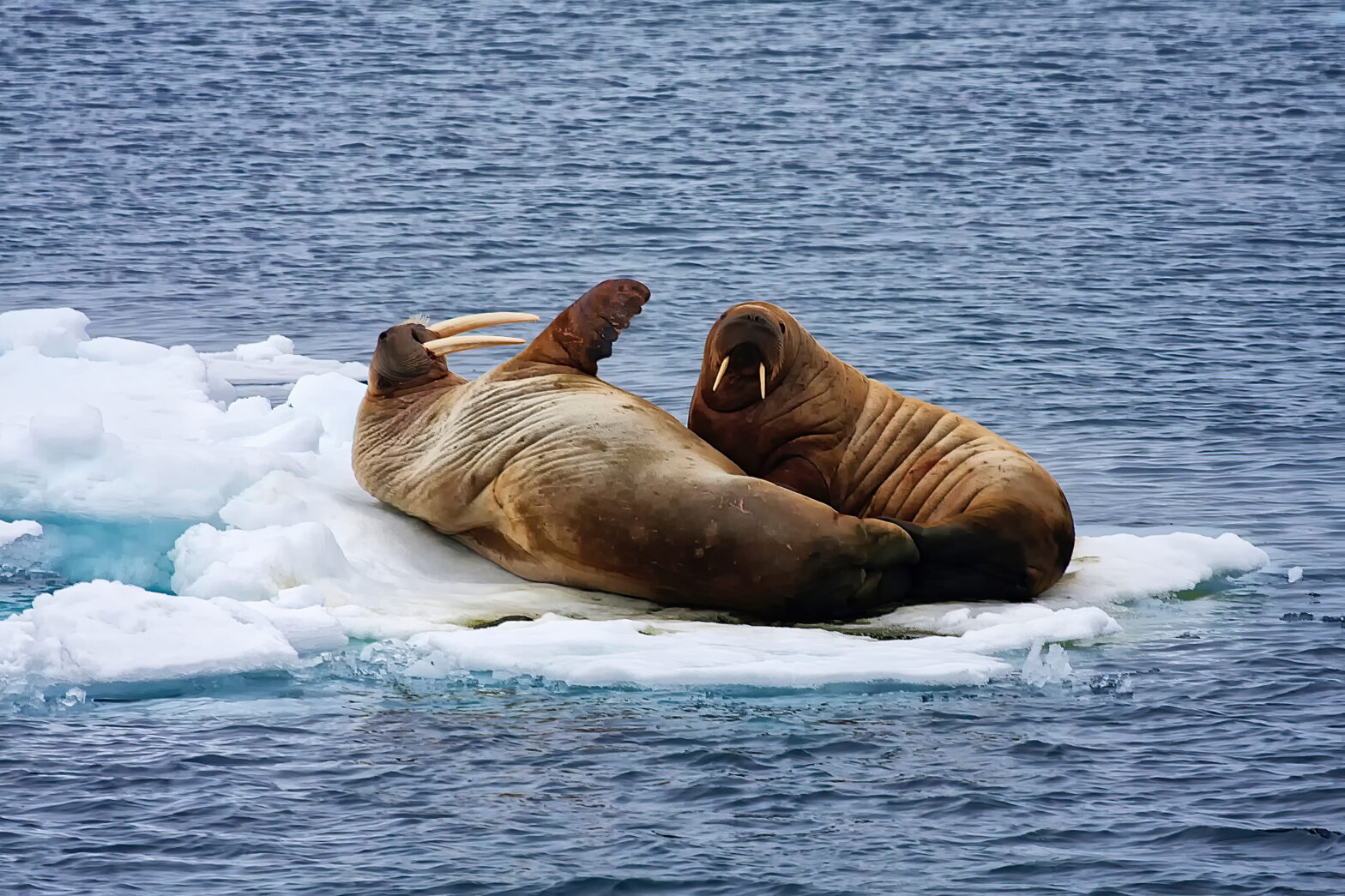Laetitia NunnyScientific Consultant
Walruses, like narwhals, are being rapidly impacted by climate change.
Have you heard about walrus ivory?
In the British Museum in London and the National Museum of Scotland in Edinburgh, visitors can see the charming medieval chess pieces which were found on a beach on the island of Lewis in Scotland in 1831. These chess pieces are believed to have been made in Trondheim, Norway. Some of them were carved from sperm whale teeth, but the vast majority are made from walrus ivory. Did you know that there was such a thing as walrus ivory? Maybe not, though you are probably aware of the large tusks that these huge marine mammals have, and it is, perhaps, not surprising that these tusks have been traded by humans and used for carvings and engravings such as the Lewis chessmen for hundreds of years.
More familiar to most of us is elephant ivory and the devastation caused to elephant populations by poachers seeking to profit from their tusks. The international commercial trade in elephant ivory was banned in 1989, although many countries continued to allow ivory to be sold within their own borders. The UK’s Ivory Act 2018 banned such sales within the United Kingdom with penalties for breaching the ban including a fine or up to five years in jail.
Now, following a public consultation, the UK’s Department for Environment, Food and Rural Affairs (DEFRA) has announced in a press release that the ivory from other species is set to be added to the Ivory Act 2018, including ivory from walruses, orcas, narwhals, sperm whales and hippos. These species are all protected by CITES (the Convention on International Trade in Endangered Species of Fauna and Flora), which the UK and many other countries are signed up to and this new development is a logical extension to the protection that CITES provides in terms of international trade.
The conservation status of these species is of concern and hopefully the addition of them to this piece of legislation will help to protect them. The sperm whale, hippopotamus and Atlantic walrus are all listed as having a «vulnerable» conservation status on the IUCN Red List of Threatened Species. The global populations of orcas and Pacific walruses are listed as «data deficient», which means that we don’t know enough to be sure about their statuses but, considering the number of threats facing them (marine pollution and climate change to name just two), we should still be concerned. In fact, in many places orcas have very small distinct populations which are certainly in a worrying state (for example the «critically endangered» Strait of Gibraltar subpopulation). The narwhal is currently listed as «least concern» but the population trend for this species is unknown and considering its vulnerability to climate change, it seems likely that its conservation status will change in the coming years.
Walruses, like narwhals, are being rapidly impacted by climate change which is fundamentally changing their Arctic habitat, including removing the ice that they use to haul out and rest on. The latest action by the UK authorities to further protect them is a welcome contribution to their protection.
‘Haulout’ is a short documentary about the Pacific walruses at Cape Serdtse-Kamen (which translates to Cape Heart-Stone) in the Chukchi Sea. The documentary was written, directed and produced by brother and sister Maxim Arbugaev and Evgenia Arbugaeva. It looks at the situation faced by walruses in a rapidly changing world and is free to watch here:
https://www.youtube.com/watch?v=8mKBZ9dy5fQ
Photo ©Rob Lott
